The History of Asagao, Morning Glory, in Japan
History shows that the plant “Asagao” (known as “morning glories” in English) was brought to Japan from China through the Envoy to Tang Yao (遣唐使) as a medical plant in the Nara Period (around 700 A.D.). Since this plant is relatively easy to take care of, it spread amongst ordinary people in Japan as a foliage plant. In the late Edo Period (around 1840-50), Asagao settled into Japanese daily life.
Iriya Asagao Ichi Festival 「入谷朝顔市」

The morning glories of Iriya are said to have started at the end of the Edo period.
The flowers were initially cultivated in the Okachimachi area of Tokyo, but as the Edo period came to an end, gardens were set up in Iriya. By the mid-Meiji Era (1868-1912), the Iriya types were so attractive that they became popular as decorative plants.
This morning glory festival was held previously in the precincts of Shingenji Temple at Iriya, Tokyo, which was larger in the old days. Later, the temple grounds were significantly reduced, and the market could no longer be held in it. Thus, the present market is held in front of the temple. The festival is opened on July 6th, 7th, and 8th every year at Iriya, Tokyo.

Please check this live coverage of Asagao Ichi at Iriya:
(A movie with no narration, to savor the real atmosphere of Asagao Ichi)
Asagao-ichi” Morning Glory Festival at Iriya, Tokyo
Cherishing “Asagao” by Common People
We could say Asagao has been a plant cherished by common people because they have grown it, displayed it in their own gardens, and discovered the various colors or shapes. The original Asagao flower is blue. However, white ones appeared during the Edo period, and gradually other colors were found. These colors arose from a mutation. For people who owned Asagao, it was fun to grow it because once it is planted, we never know what kind of color would appear on its petals.
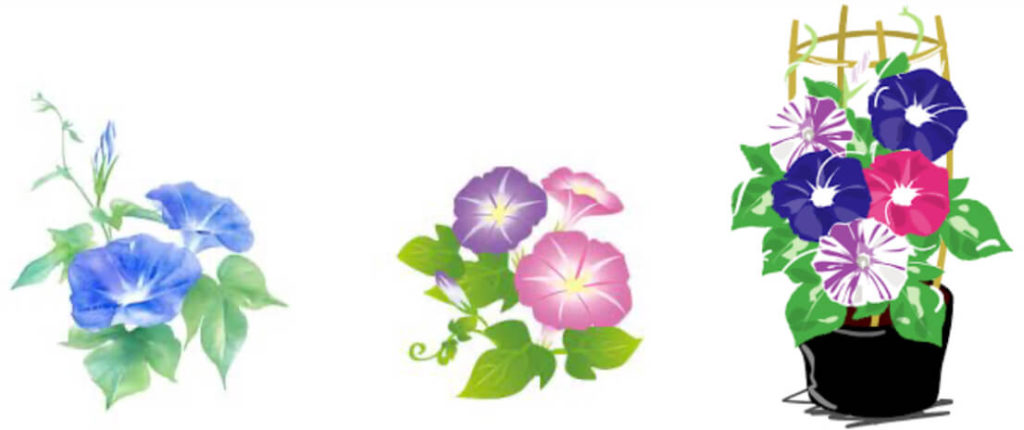


This habit of common people to cherish flowers, as opposed to higher class of such as aristocrats, really amazed foreign researchers. For instance, Robert Fortune, (1812-1880) a Scottish botanist, described Japan in his book “Yedo and Peking”(1863) as follows:
“The capital of Japan is remarkable for the large number of gardens in its suburbs where plants are cultivated for sale. The good people of Yedo, like all highly civilized nations, are fond of flowers, and hence the demand for them is very great…”
This quote means a kind of amazement and praise to the Japanese horticulture powered by common people.

The tradition of this flower festival vanished from Iriya during the Taisho Ira (1912-1926). However, after World War II, a team of locals recreated this tradition and made it one of their most significant festivals.
Festival Combined with Food Stalls
Like other festivals in Japan, Asagao Ichi is accompanied by various kinds of food stalls, which is a must for visitors to savor Japanese matsuri 祭 (festivals).
A number of food stalls will be opened in that limited street. You can eat fried noodles, skewered chicken, Taiyaki, barbecued beef, etc., which are indispensable to Japanese matsuri culture and traditions.

Please check out this link of festival-goers enjoying the food and atmosphere of the Japanese Matsuri Festival.(A live coverage with no narration, to report the hustling, bustling street of Iriya at night during the Asagao Ichi Festival)
https://youtu.be/G1auBh9D-zQ
Final Thoughts
Asagao Matsuri has been and will be a significant and indispensable festival to savor the arrival of summer in Japan. You should come experience this summer tradition and meet the morning glories that have delighted quite a lot of generations.
The hustling, bustling street of this three-day seasonal event will surely take you back to the Edo Period and give you the opportunity to savor Japanese “matsuri” culture.

National Tour Guide (English), Eiken Grade 1, TOEIC A rank. Have been studying and teaching English for over 30 years.

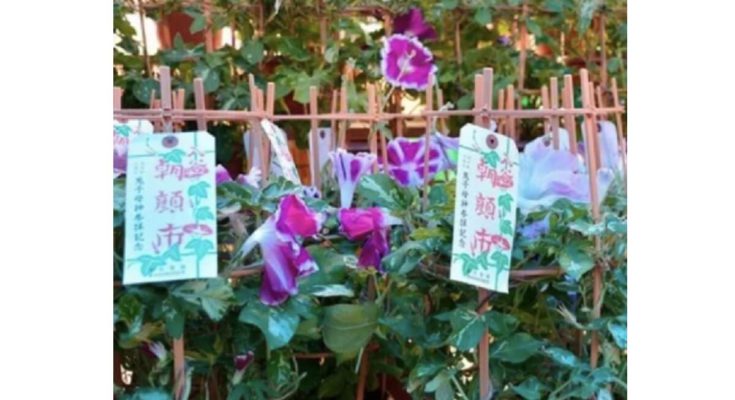
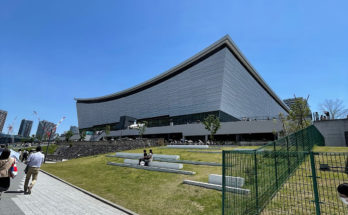
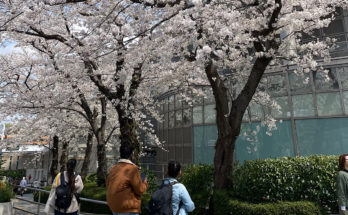
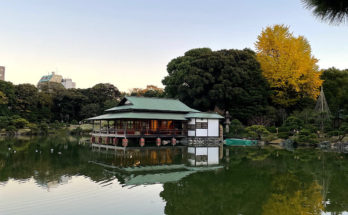
 HTJ has a YouTube page! Check it out
HTJ has a YouTube page! Check it out
Hi, Takeshi san.
Thank you for sharing about various aspects of Japanese culture as always.
I had no idea it was brought as a medical plant.
Some time ago, I saw morning glories blooming on a river bank.
Ordinarily, morning glories grow upward, along around the support poles, but those morning glories were spread out flat on the bank and had a different kind of beauty.
Anyway, “Asagao ichi” must be fun! I would be able to see various kinds of morning glories.
I like the part, “Festival Combined with Food Stalls”, too!
Yes, we enjoy the Yatai vibe at not only big festivals, but also every festival.
P.S. I enjoyed your interview with Jun san the other day^^
Hi, Akiko san, thank you very much for reading my article and sharing your views on Asagao.
In my opinion, Japanese culture stays in our daily life such as growing plants and enjoying matsuri festivals. These are consist of people’s wisdom and entertainment. If you have an opportunity to visit Iriya, Tokyo, please savor the cultural wind of Edo period.
And also many thanks to hav a glance at the Live interview. I’m glad to know that you enjoyed watching that clip.